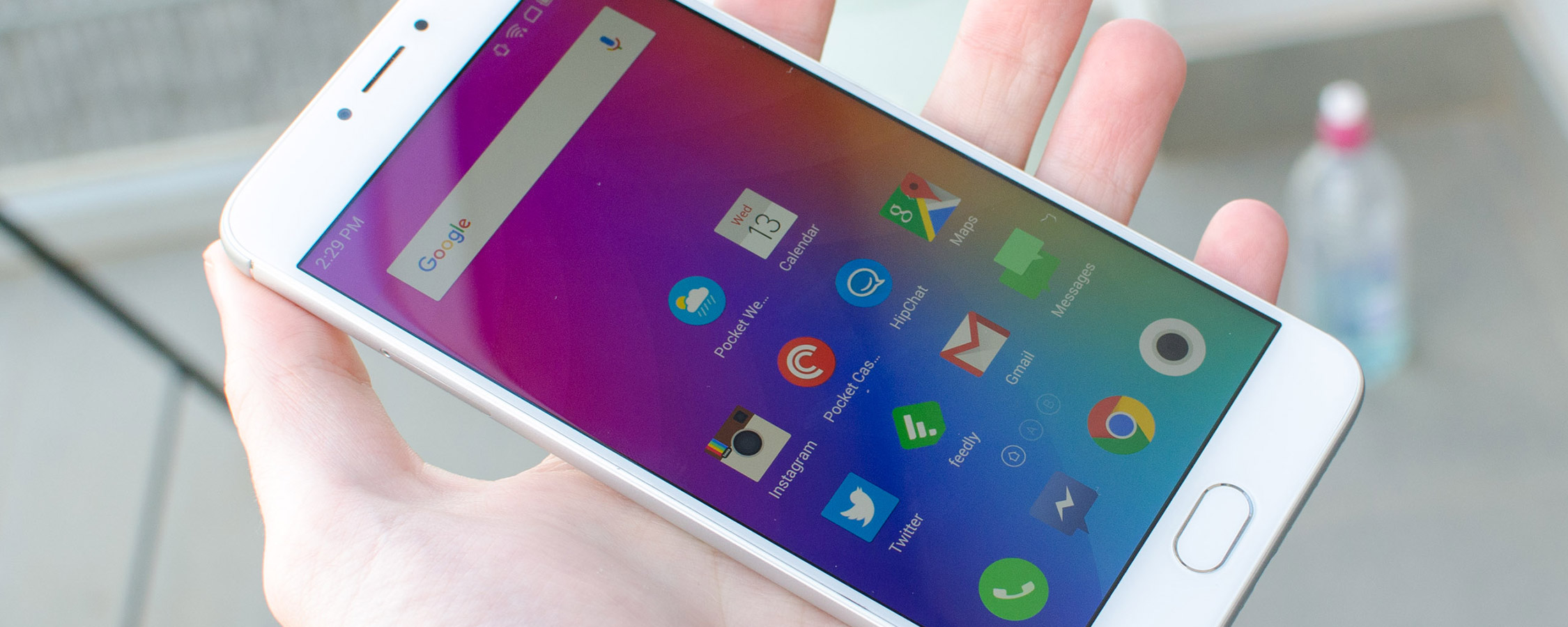Camera
The Meizu m3 Note comes with a 13-megapixel (4208 x 3120) OmniVision OV13853 1/3.06" CMOS sensor with 1.12 µm pixels, paired with a 25mm (effective) f/2.2 lens. On the front is a 5-megapixel (2592 x 1952) Samsung S5K5E8 1/5" CMOS sensor with 1.12 µm pixels, paired with an f/2.0 lens. Both cameras are capable of 1080p video recording, and the back camera has a two-tone LED flash.
Neither of these cameras is particularly impressive, falling well below the Moto G 2015 in terms of overall quality. Luckily, Meizu has managed to outperform the terrible cameras in the Umi Touch, but in general what the m3 Note provides is below what I'd expect from a $170 device in 2016.
I have a number of issues with the 13-megapixel rear camera, some of which relate to the hardware itself. This OmniVision sensor is yet another from the company that produces poor dynamic range, which results in photos with less contrast and less detail in shadowed areas than its competitors. Photos that have areas with under or overexposure are commonplace from the m3 Note, even though it tries its hardest to meter correctly.
Fine detail is lost when viewing 100% crops of images taken with this camera, and there's a slight tendency for the noise reduction filters to produce a dreaded 'oil painting effect'. On top of that, the lens is not great, which leads to images that are much sharper in the center than at the edges. Bokeh is mediocre, but I don't expect much better from an f/2.2 lens.
Color quality from the rear camera is average at best in strong lighting conditions, producing the occasional good shot. Oddly, the in-app camera preview exhibits much worse color quality than the final result, which can be a little disconcerting as the camera preview looks absolutely terrible most of the time. Greens seem to be handled quite well from the m3 Note, but other colors can lack depth or vibrancy.
In worse lighting conditions - cloudy days, artificial indoor lights, low-light environments - the m3 Note's camera is poor. There's a real lack of depth to images taken on cloudy days, which makes everything look washed out and gloomier than real life. Low light images aren't great, and lack saturation, contrast and sharpness. At night you can basically forget about taking a good photo.
Again, I don't expect greatness from an entry-level camera, but the results I've produced from my Moto G 2015 are better in essentially all conditions. Image processing and the sensor itself appear to be issues here, which is disappointing because I don't believe a simple software tweak could improve shots to the level of the Moto G.
The front facing camera isn't that great either: expect to get typical photos here for a budget device. Sharpness is lacking from the 5-megapixel sensor, and color quality is similar to the rear camera. Don't expect to get good low-light photos here either, even under artificial lights.
The camera app included on the m3 Note is easy to use, and performs well aside from issues with the preview's color quality. Focus and capture speeds are below average, so don't expect to take photos quickly with this camera, and it can take a while to open the camera app or view photos you've taken previously.
There are a number of good features found in the app, including an HDR mode, a "light field" mode that allows you to (clumsily) refocus images, a pretty decent manual mode for an entry-level handset, a panorama mode, and a GIF creator. On the video side you'll also find slow-motion capture, which is only 480p but does produce video four times slower than real life.












